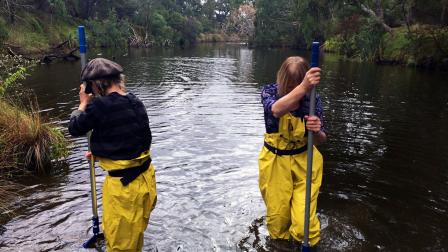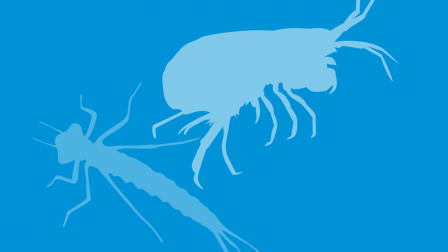This introductory guide to running waterbug sampling sessions is designed for teachers (Foundation to Year 8).
Waterbugs, or aquatic macroinvertebrates, are small creatures that have no backbone and can be seen with the naked eye. They live all or part of their life in the water, providing a food source for larger animals such as fish, frogs, birds and platypus.
Macroinvertebrate sampling complements water science analysis and can provide a quick assessment of the health of a particular waterway and site. When compared to other locations or at different times these assessments help us determine the health of, or changes that occur in, the aquatic ecosystem.
Field excursions are a great, hands-on way to enhance students’ involvement with their natural environment and can have a profound effect on their learning and wellbeing. Discovering waterbugs in your local waterway allows students to explore a fascinating ‘invisible’ world. It also showcases the work that aquatic ecologists and interested community volunteers do to protect our local waterways – and how students and their families can help.
Download the guide
The activities in this guide enable students to:
- act as scientists to identify and pose questions
- gather and analyse data
- draw conclusions to make evidence-based arguments about the health of a waterway.
The guide also provides instructions for teachers collecting a waterbug sample for classroom use.
Watch the video
You may also like...
Waterbug monitoring
Waterbugs let us know how healthy our waterways are - and you can too, by monitoring your local macroinvertebrates.

Waterbug identification guide and resources
Learn how to differentiate waterbugs with these handy resources, from guides to posters and data sheets.

